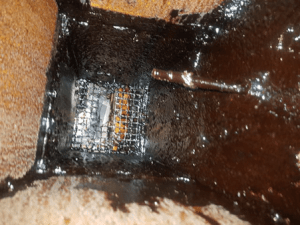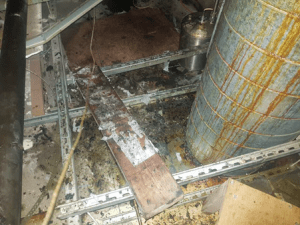Get Ahead of the Regulators
Alan Gregory, director of IAQ Consultancy Services, was interviewed by BESA (Building Engineering Services Association) for it's 2022 'BESA Book'. Here we share an excerpt of the article, where Alan explains why now is the time for buildings and organisations to get a handle on indoor air quality
The damage outdoor air pollution can do to our lungs has long been recognized and there is a range of legislation in place across the United States, Europe and other territories to reduce its ill effects. Health
professionals and organisations are switching their focus to indoor air quality (IAQ) which can have a profound impact on our wellbeing, given that we spend up to 90% of our time indoors.
The World Health Organization (WHO) is among the international bodies studying this issue and developing guidelines aimed at ensuring we can all breathe cleaner indoor air. Many countries have introduced smoking
bans that dramatically improved IAQ in public buildings and this success is regarded as a precedent for taking further action.
Governments and international organisations have become proactive when it comes to tackling outdoor air pollution, developing action plans, regulations, and targeted interventions. Cities use measures like London’s
‘toxicity charge’ to reduce the number of older, more polluting vehicles in congested areas. And car manufacturers are subject to exacting emissions criteria so that newer models are cleaner and greener.
Carbon neutrality has become the new target for governments keen to reduce global warming and provide cleaner air for their citizens, requiring new laws which crack down on pollutants. As we understand its effects
on health more and more clearly, IAQ will soon become subject to a similar legislative agenda.
A hallmark of leading organisations is that they don’t simply react to challenges as they arise; they see change coming down the track and plan accordingly. By prioritizing IAQ, businesses, schools, and other institutions
future-proof themselves against the inevitable tide of regulation, as well as providing the healthiest, most productive environments for building occupants.
Realtime monitoring IAQ in your building can help you get ahead of the regulators. The exciting thing is that it also makes sure you get the most out of your people by giving them safe, pleasant surroundings
to do what they do best. What’s more, operational efficiencies and cost savings will also flow from having a better handle on IAQ.
By prioritising IAQ, businesses, schools, and other institutions future-proof themselves against the inevitable tide of regulation, as well as providing the healthiest, most productive environments for building occupants.
NICE wants local government to draft air quality strategies that specifically deal with indoor air and step up inspections to identify poor air conditions. They also want regulations updated to reflect the new WHO
guidelines and a regime of enforcement to improve IAQ.
It’s clear that policy-makers are under ever greater pressure to react to evidence that poor indoor air quality damages public health. Various national and international organisations are examining the issue closely, with a view to introducing new rules and legislation.
We know from other sectors, from fintech to genetics, that regulation often lags behind science. The scientific understanding of how indoor air quality impacts people is well established, and now public bodies and authorities are quickly catching up with plans for action. As a consequence, now is the ideal moment for organisations to get ahead of the regulators.
Time to take the lead The most successful organisations don’t just respond to new challenges when they arise. They anticipate change before it happens, adapt their priorities accordingly, and use the opportunity to
improve their operations.
By monitoring IAQ, owners and operators will have all the information needed to diminish any air quality threats in the building. Highquality sensors provide real-time information in a format that’s easy to understand
and they can be linked, for example, to ventilation systems, so that action to regulate IAQ can be taken automatically.
Facilities managers are often asked to balance an ever-greater range of responsibilities while taking into account changing compliance rules and balancing tight budgets. Moreover, FMs are at the heart of how a
building serves its occupants, but too frequently they’re seen as the ‘go-to’ person when something goes wrong.
The installation of IAQ monitors provides information on factors that are proven to affect the productivity and happiness of building occupants. As a result, businesses can use this data to improve the bottom line, because their employees perform better, take less sick leave, and stay in their position longer.
Additionally, IAQ data can help stretch tight budgets by enabling better planning so that air quality systems are deployed in rooms with greater capacity at peak times. Cognitive scores can double in cleaner, better-ventilated classrooms, while test scores are shown to rise where students breathe higher quality air.
Meanwhile, for HVAC professionals, a focus on IAQ and the likelihood of regulation can provide a real point of difference. By integrating monitors with their ventilation system, customers will have insights that they can use to add value to their businesses and produce better results.
The conversation can be extended from the practicalities of an HVAC solution and energy efficiency, to the benefits of improving the work environment and future-proofing against new legislation. Modern IAQ monitors are easy to install. They don’t require a lengthy, disruptive process that involves ripping out walls and ceiling tiles or running lots of wires through a building. The industry-leading sensors are battery-operated, wireless, and compact. They can be mounted on walls or ceilings and they work in harmony with existing HVAC systems and building automation systems (BAS). Buildings can have the technology they need to stay ahead of the curve, meaning that they will be up and running in no time.
It’s now the perfect time for organisations to make IAQ a priority in their buildings, not just to anticipate regulations, but because of the clear benefits that cleaner air has on people’s productivity. There’s a clear opportunity for businesses, schools and other institutions to implement improvements that make for healthier, happier environments, while future-proofing themselves against changes in the law.
Discover more about Remote IAQ monitoring for offices, schools & hospitals >>
CO2 monitoring - a prerequisite for good indoor air quality?
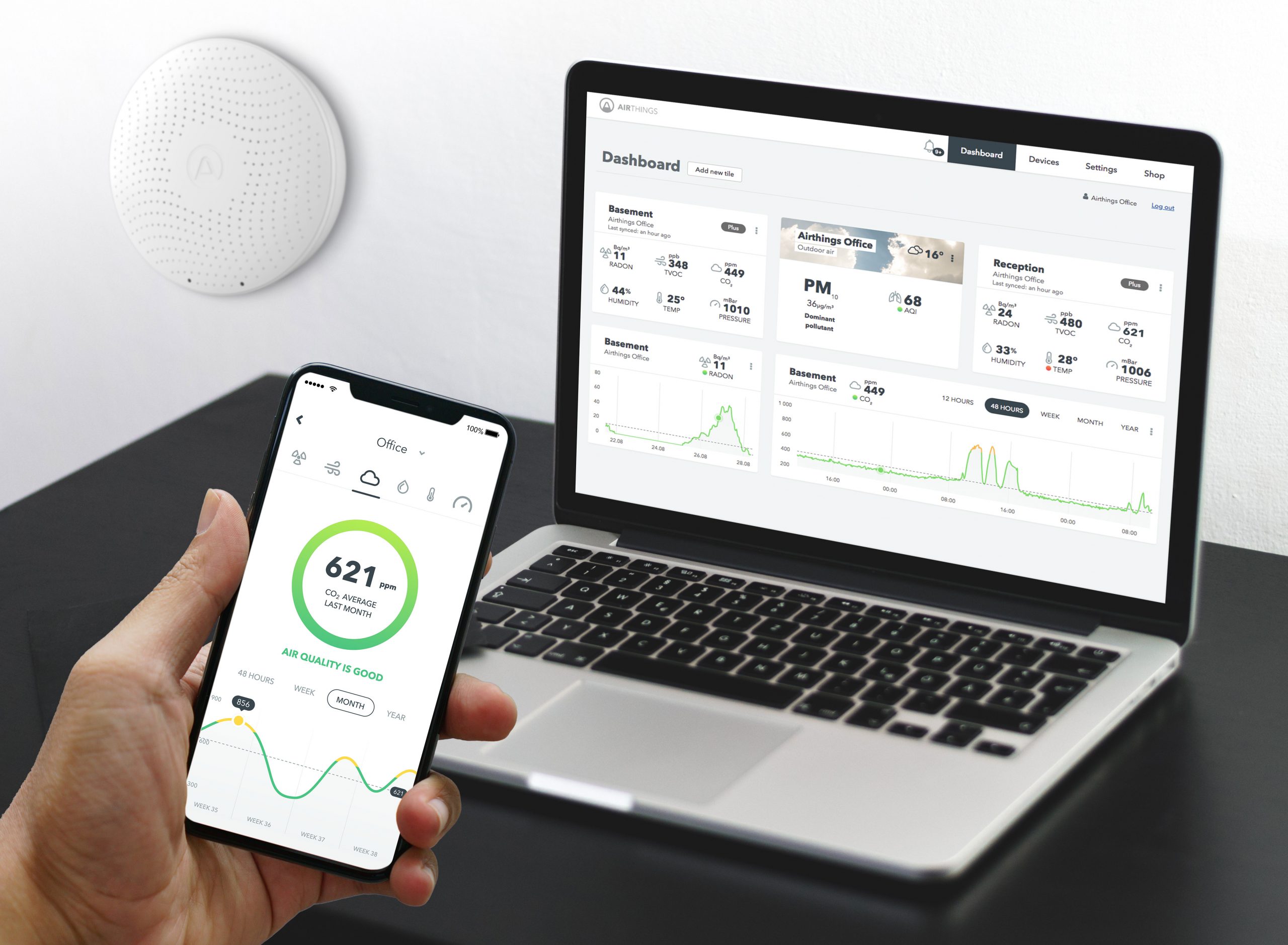
Why is there such emphasis on Co2 Monitoring at the moment?
We asked Ian Gregory, IAQ Managing Director for his take on this important subject matter:
"Post Covid-19, facilities managers and building owners and managers are even more aware of the importance of good indoor air quality. Good ventilation is a critical prerequsite of good indoor air quality, and CO2 monitoring is an excellent indicator of the efficiency of ventilation.
but, let's face it, who thinks about the air that we breathe? It's fresh, right? Unfortunately, that's not always the case. The average adult human at rest breathes 11,000 liters of air a day or 8 liters per minute.
That air contains Microbes, bacteria, Particulates, viruses, lead, arsenic, mercury, benzene, dioxins, and cadmium, to name a few of the things that are not good for you.
IAQ (Indoor Air Quality) Monitoring is a vital weapon in the arsenal of FM and building owners and managers. BESA Guide H&W002 Indoor Air Quality for Health & well-being and its Publication Buildings as Safe Havens (Bash) cover this subject in a very accessible format.
Put simply, good ventilation is a critical prerequisite for good IAQ. The importance of good ventilation to dilute and remove internally-generated contaminants has also been highlighted by the Covid-19 pandemic. CO2 is an excellent indicator of the efficiency of ventilation - providing that there are people present to supply exhaled air.
Generally, we are trying to achieve at least 10LPM of air per person in an office environment, and a good indicator of whether this is being achieved is to measure CO2.
CO2 in increased levels is also known to cause drowsiness, headaches, and loss of concentration and in combination with Temperature and Humidity can contribute to that stuffy feeling we all experience.
There is widespread agreement that >1,000ppm is sub-optimal. There is evidence that people will detect and be affected by >750ppm
BASH has an excellent IAQ risk assessment that I would recommend to any person responsible or interested in good IAQ and our Airthings for business remote monitoring equipment is a simple affordable way to monitor 24/7."
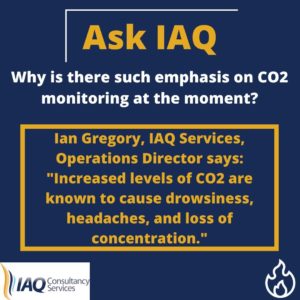
Nationwide shopping centre group addresses fire safety concerns
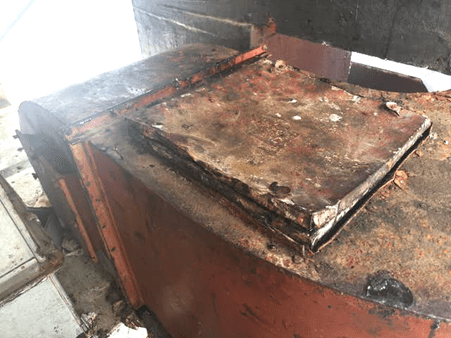
Since 2016 IAQ services has been working closely with 14 shopping centres to address fire safety concerns that the group stakeholders had with regards the kitchen extraction systems within numerous tenanted restaurants within the centres.
Our auditors surveyed 265 individual restaurant ductwork systems and highlighted several concerns in 90% of the tenanted restaurants regarding system design, cleaning, and reporting standards.
Ian Gregory worked closely with the landlords H&S, Maintenance and Commercial stakeholders to develop an in-house ductwork cleaning policy with safety notices in line with BESA TR19, the industry standard for fire safety within kitchen ventilation systems.
Regular auditing and management reviews with the landlord, tenants and cleaning contractors as well as an overview on system design in new fit outs has helped to reduce the landlords risk rating with their commercial insurers and reduce the audit failure rate significantly.
